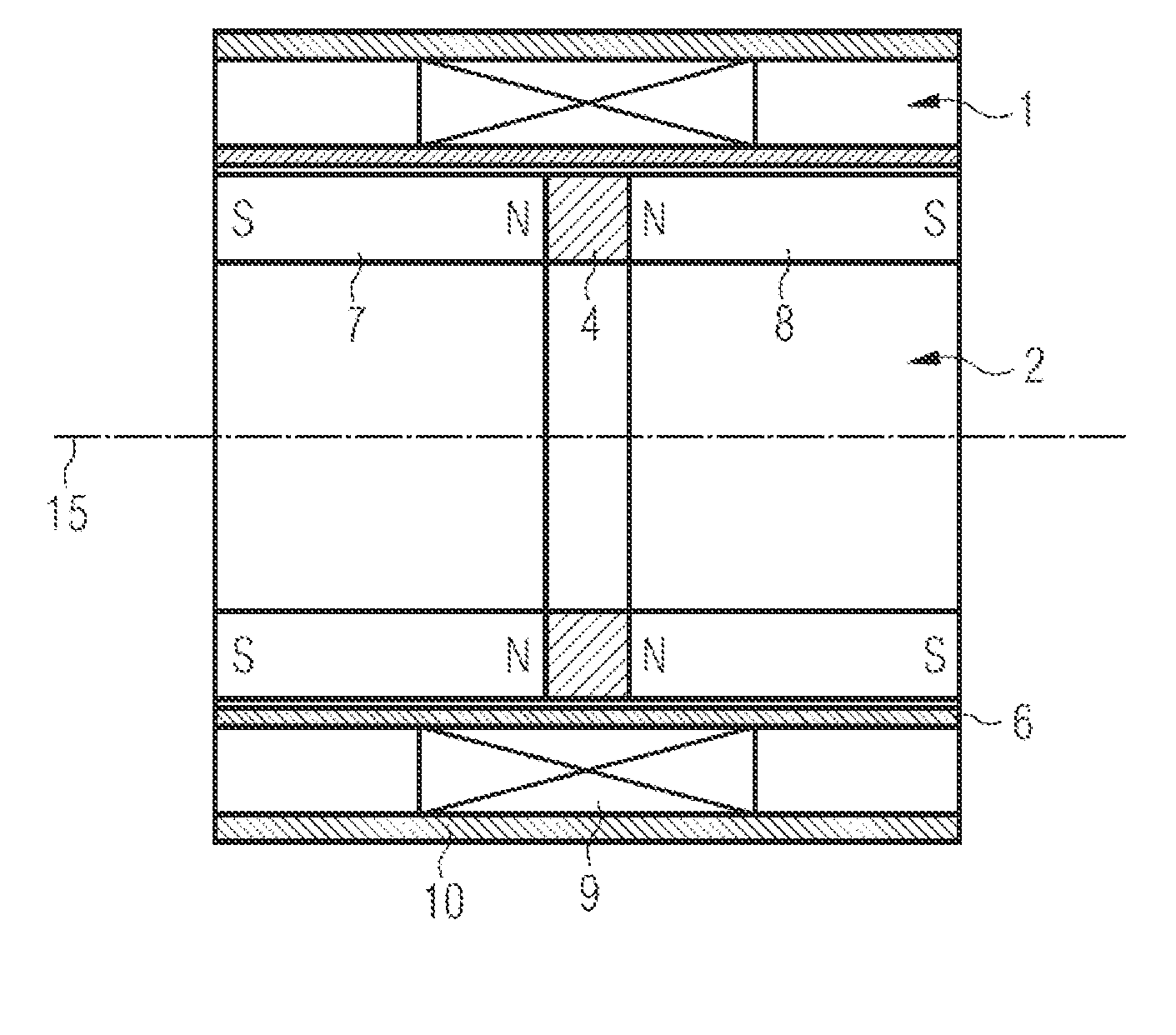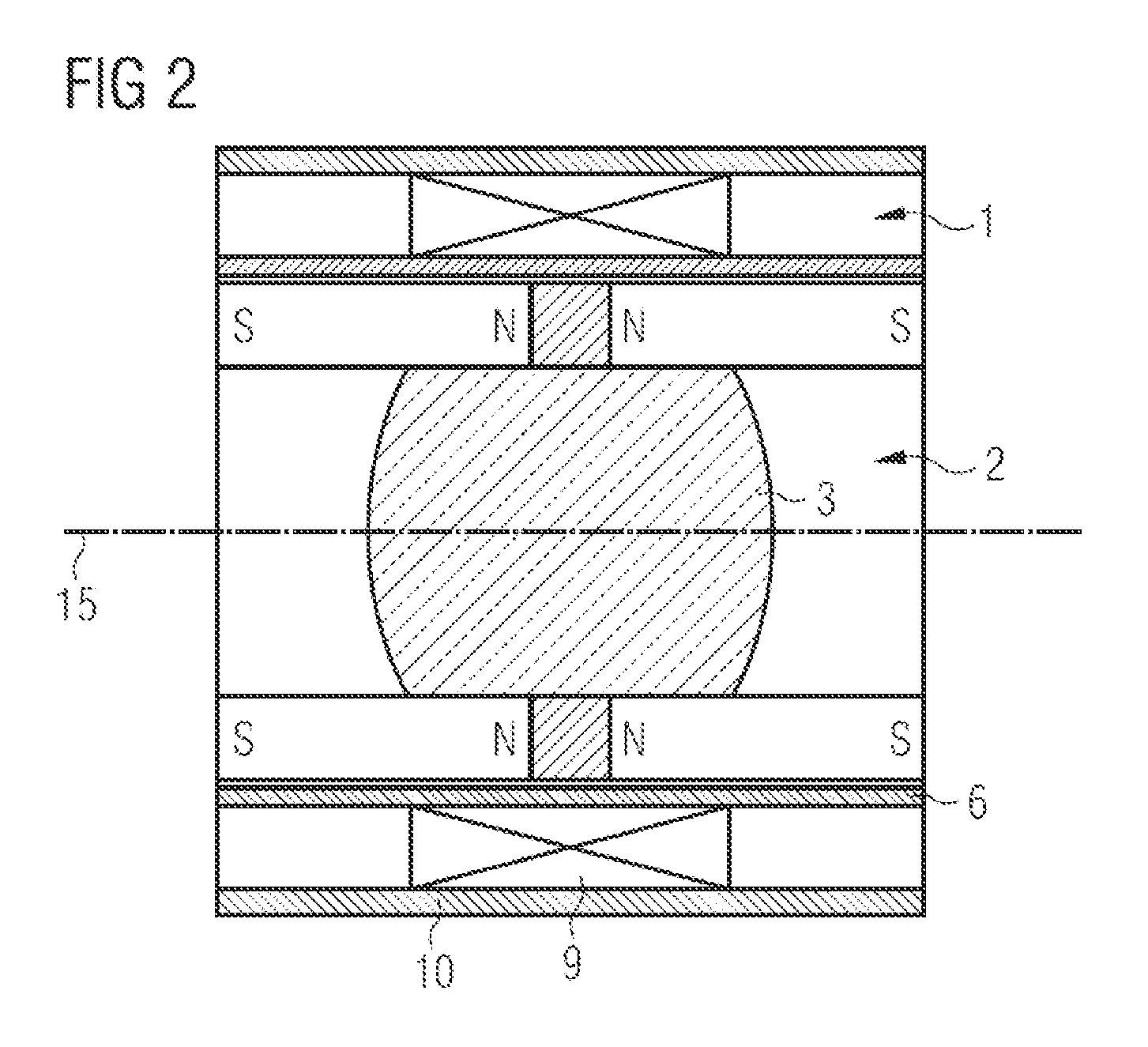Reluctance And Lorentz-Force-Operated Linear Drive
a linear drive, lorentz-force-operated technology, applied in the direction of electric controllers, instruments, ignition automatic control, etc., can solve the problems of linear drive sluggishness, rigid system and limited optical quality, and inability to adjust the focal length of the lens, so as to reduce static and sliding friction, the effect of reducing static and sliding friction and reducing sliding friction in the interior of the motor
- Summary
- Abstract
- Description
- Claims
- Application Information
AI Technical Summary
Benefits of technology
Problems solved by technology
Method used
Image
Examples
Embodiment Construction
[0033]FIG. 1 shows schematically an exemplary embodiment of a linear motor in cylindrical design in a sectional view. The stator 1 includes a magnetic guiding member 10 in the form of a tube, a coil 9 being disposed in the bore whereof. The magnetic guiding member preferably consists of soft magnetic material, like a ferromagnetic material. Said coil is enclosed by the magnetic guiding member over its entire length, i.e. it does not project beyond the magnetic guiding member. A sliding sleeve 6 terminates the stator 9 here towards the inside and provides a sliding layer for the armature. The sliding sleeve must consist of a non-ferromagnetic material. The armature 2 is surrounded, at least partially, by the coil and has a first permanent magnet and a second permanent magnet. Here the armature 2 includes two oppositely magnetized permanent magnets 7, 8 and an interposed pole piece 4, which enables a defined emergence of the magnetic fields of the permanent magnets through the coil in...
PUM
 Login to View More
Login to View More Abstract
Description
Claims
Application Information
 Login to View More
Login to View More - R&D
- Intellectual Property
- Life Sciences
- Materials
- Tech Scout
- Unparalleled Data Quality
- Higher Quality Content
- 60% Fewer Hallucinations
Browse by: Latest US Patents, China's latest patents, Technical Efficacy Thesaurus, Application Domain, Technology Topic, Popular Technical Reports.
© 2025 PatSnap. All rights reserved.Legal|Privacy policy|Modern Slavery Act Transparency Statement|Sitemap|About US| Contact US: help@patsnap.com



